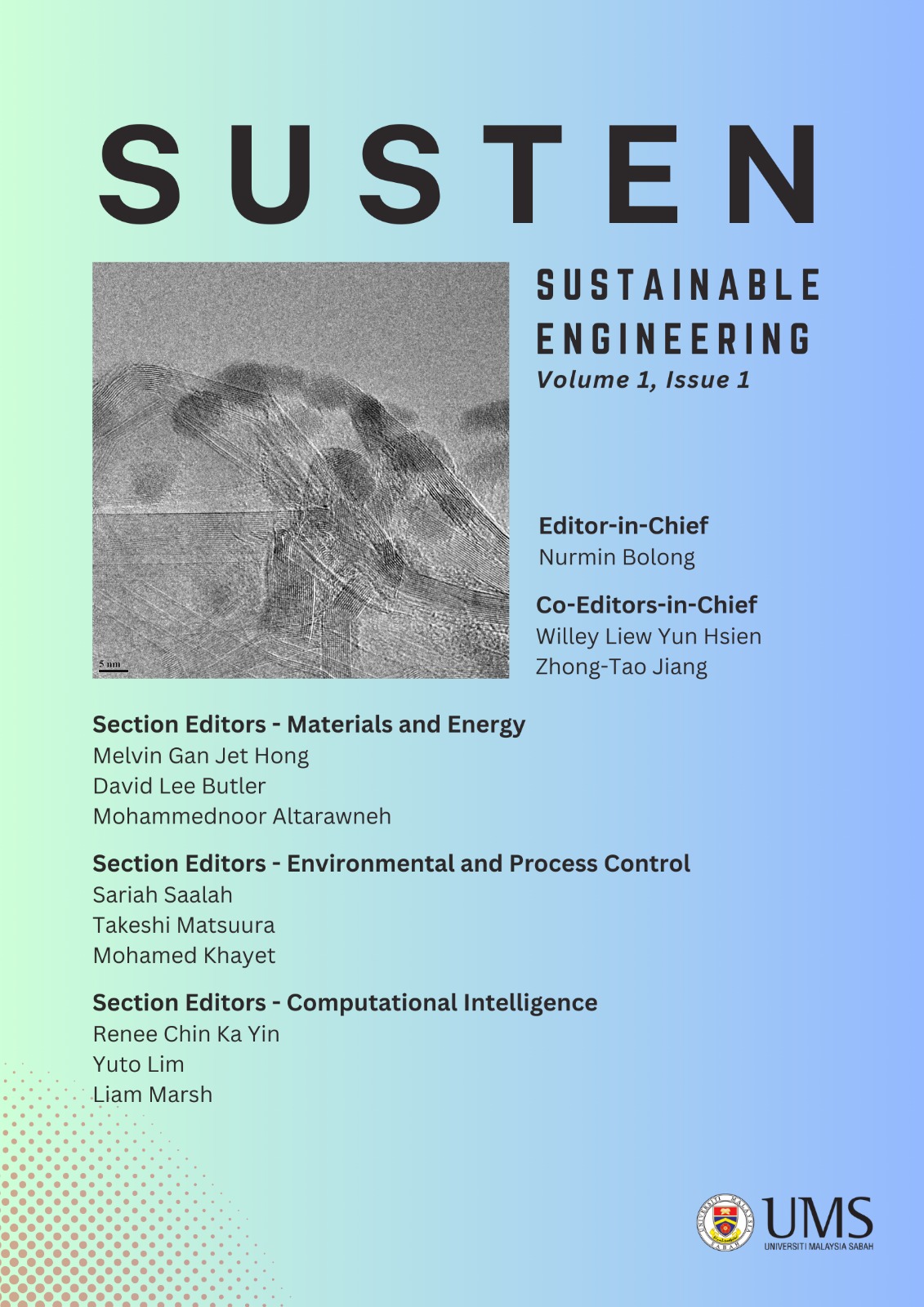A Review on Utilising Combined Agricultural Waste Adsorbents for Ammonia Nitrogen Removal: Insights into Bamboo Biochar and Empty Fruit Bunch
DOI:
https://doi.org/10.51200/susten.v1i1.5259Abstract
This review highlights the effectiveness of bamboo biochar and empty fruit bunch (EFB) fibres as low-cost adsorbents for ammonia nitrogen removal from wastewater. Both materials are highlighted for their abundant availability and substantial adsorption capabilities. Bamboo biochar, derived from pyrolysed bamboo, benefits from its high surface area and porosity, enhanced further through chemical activation that increases its functional groups and pore structure. This modification significantly improves its efficiency in adsorbing ammonia nitrogen. Similarly, EFB, a by-product of palm oil production, is treated through carbonisation and activation, which enhances its adsorption properties. The review also discusses the potential for combining bamboo biochar and EFB, as their complementary properties could offer a more effective solution for wastewater treatment. The paper emphasises the advantages of these materials in addressing environmental challenges and highlights the need for further research into their combined use, as well as their potential for reuse and regeneration to promote sustainability. This review provides insights into optimising adsorbent modifications and exploring practical applications in wastewater treatment.
Keywords: Bamboo biochar; Modified empty fruit bunch; Combined adsorbent; Ammonia nitrogen Adsorption; Wastewater






